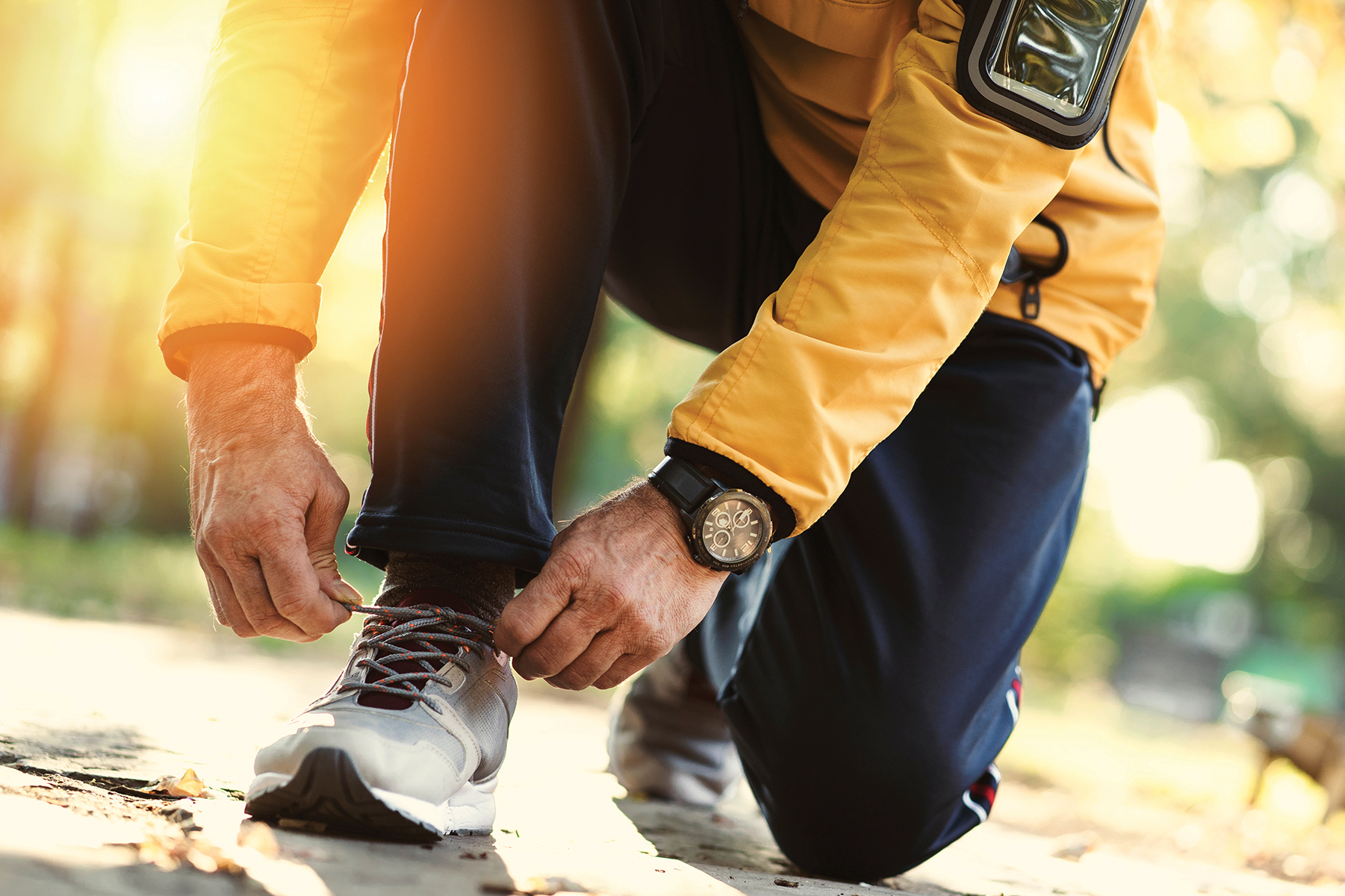Free (From) Falling

Falls – not fall, the beautiful season of glorious weather, vibrant foliage, and pumpkin spice everything that we are finally experiencing – no, I’m talking about falls, with an “s,” when we inadvertently or unintentionally hit a surface that is on the ground or a lower level than we are. Falls, a threat to the health of older adults that can reduce their ability to remain independent. Falls, which have for generations been accepted as a normal consequence of aging.
Many of us experience benign stumbles in our daily activities, such as tripping on an uneven sidewalk, yet this isn’t a big deal. We get up, brush ourselves off, and continue on our merry way. However, sometimes a fall can be more serious.
According to the Center for Disease Control and Prevention (CDC), falls are the number one cause of fatal and nonfatal injuries among older adults (defined as those age 65 and older). Each year, millions of older people fall (more than one out of four, to be exact, with women making up the majority of those who fall). Statistically, per the CDC:
– Falls are the leading cause of death in older adults within the first five years of a fall resulting in a hip fracture;
– One out of five falls causes a serious injury, such as broken bones or a head injury;
– 3 million older people are treated in emergency departments for fall injuries;
– Over 800,000 patients a year are hospitalized because of a fall injury, most often because of a head injury or a hip fracture;
– Each year, at least 300,000 older people are hospitalized for hip fractures;
– More than 95% of hip fractures are caused by falling;
– Falls are the most common cause of traumatic brain injuries.
Additionally, the CDC states that less than one older adult out of three who fractured their hip returns to their pre-fall level of health and well-being, and unfortunately, falling once doubles your chances of falling again. I can certainly attest to this fact, as I’ve suffered two falls myself in the not-so-distant past. The first occurred in July, 2018. It was day six of a seven-day bike tour with more than 13,000 bikers riding 50-60 miles per day across the state of Iowa. We were in mile four when we had to pause our ride to wait for an emergency responder to tend to an injured biker just ahead. Unfortunately, a fellow rider behind me wasn’t paying attention and crashed into me as I was seated on my bike. I catapulted over my handlebars, landed on my right side atop gravel, and fractured my clavicle (collarbone). This crash led to an ambulance ride, X-rays, immobilization of my shoulder in a sling/splint, and five months of recuperation. Fast forward to June of 2019. After feeling much better after my long recovery the previous year, I participated in a competitive triathlon in nearby Smithfield. After placing in the top three of women in my age group, I ran up to the podium to receive the award for which I had qualified – only to fall face down, fracturing my right thumb.
WHY DO WE FALL?
There are many factors that may contribute to why we fall, including (but not limited to):
– Heart disease, low blood pressure, and dementia;
– Fatigue;
– A decrease in muscle mass and strength;
– Vision changes, potentially altering our sense of depth perception;
– Lightheadedness, and even fainting;
– Dehydration;
– Vitamin D deficiency;
– Use of certain medications;
– Environmental hazards, such as uneven steps or clutter that can be tripped over.
HOW DO WE PREVENT FALLS?
Here are some suggested ways:
– Be aware of the possible side effects of medication that may contribute to loss of balance;
– Adopt and practice mindfulness and situational awareness; pay keen attention to your environment and make sure you have an unobstructed view of walkways;
– Properly secure items such as area rugs and electrical cords to the floor;
– Wear socks with grippers on the bottom while walking on wood floors;
– Increase and target lighting, beyond ceiling light fixtures, even a night light, for increased visibility;
– Avoid wearing high heels and wear and lace up shoes properly.
While implementing these measures in our daily lives will help reduce chances of falling, it’s also important to improve our ability to avoid them through physical activity – particularly activity focused on improving strength, flexibility, endurance, and balance. Sustained exercises such as walking, strength training, swimming, and yoga are great options. Improving balance, building stronger muscles, and fortifying ourselves will help us to suffer less impact from future falls.
Aging is inevitable – but no longer does falling need to be synonymous with it. Taking steps such as decluttering your home, hydrating, and improving your balance and strength can go a long way in keeping you free from falling for years to come.

